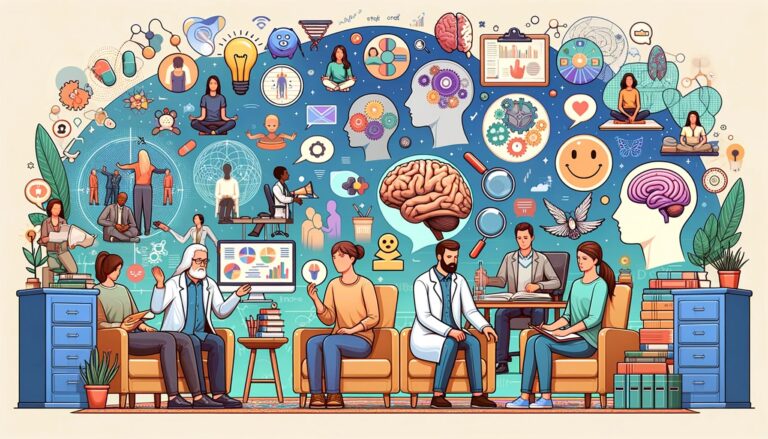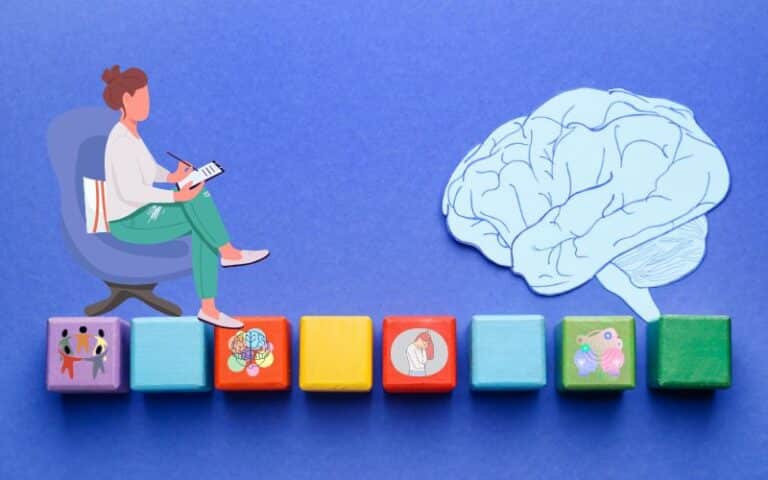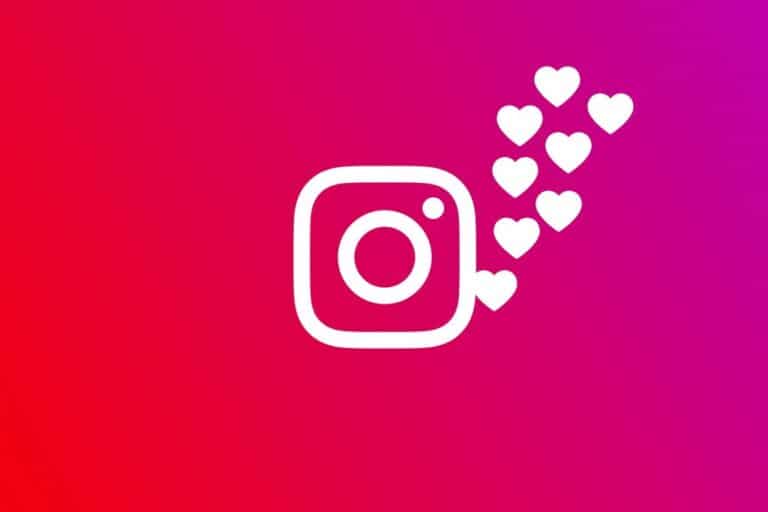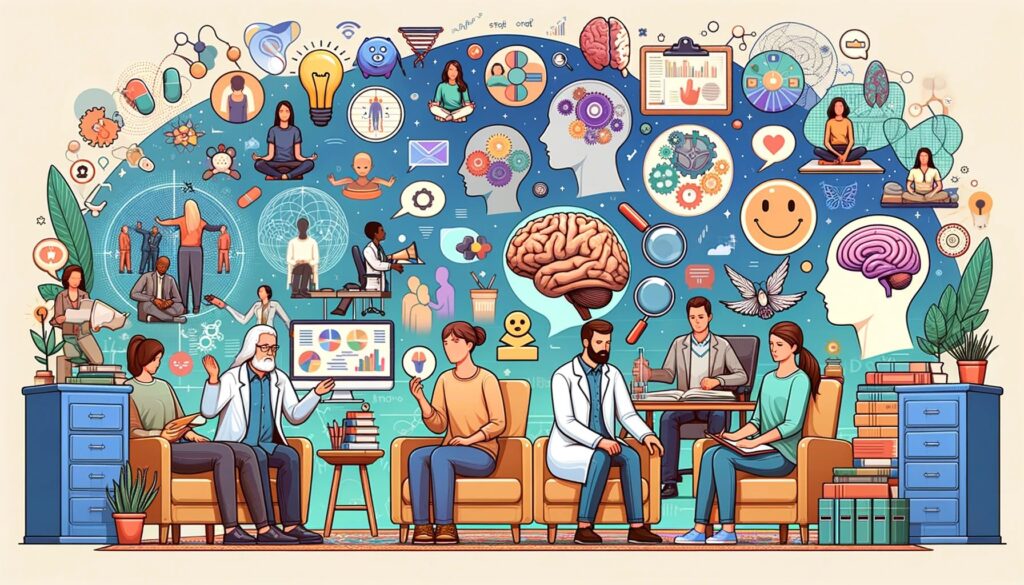The information, entertainment, communication, etc. are available unlimited on the internet. But nowadays, when having all this easily accessible at our fingertips, it is really hard to stay focused online. According to studies, the attention span has dropped tremendously on average in the internet age, making someone to concentrate without often being distracted.
Going down rabbit holes of Facebook, Reddit, and Twitter kills performance time and stops the critical work from getting done. The good news is that there are tested techniques that can drastically enhance focus while online.
Causes of Online Distraction
Before covering solutions, it helps to understand precisely why staying focused online can be so difficult. Scientists have studied the effects of internet use on attention span and identified key culprits behind the lack of focus:
Mental Fatigue
Hours of continuous browsing drain mental stamina over time, resulting in depleted willpower, reduced vigilance, and lazy browsing habits. This makes it harder to self-regulate and say no to distractions.
Information Overload
The internet provides access to more information than one person could consume in a hundred lifetimes. Trying to process so much data tires out the brain’s capacity to stay selectively focused. Using a summarize website tool, like Smodin, can help condense dense content into digestible insights, reducing cognitive burden and improving clarity.
Hyperlinks and Social Media
Links within articles and the temptation of social media notifications keep brains in a state of divided attention. This constant context switching overwhelms cognitive control.
Fear of Missing Out (FOMO)
Humans have evolved to monitor opportunities and threats. FOMO hijacks this impulse by triggering anxiety that engaging content or connectivity will be lost if attention wavers. To overcome these obstacles, a combination of both environmental changes and shifts in browsing habits is required.
Tips to Improve Online Focus
Now let’s explore tips to transform browsing habits and boost productivity.
Set Aside Distraction-Free Time Blocks
One of the most effective ways to improve focus while online is to carve out set periods devoted solely to distraction-free browsing. This requires avoiding anything unrelated to the task at hand, whether it be checking emails, glancing at social media, reading the news, etc.
Instead of endlessly surfing in a sea of lost concentration, set a timer for 30-90 minutes and devote that block solely to a planned browsing task. Schedule focused time blocks during peak energy and willpower hours in the morning or directly following a break. Determine the night before what sites and tasks will be tackled to further bolster vigilance.
When the timer goes off, take a break before deciding whether to continue for another focused block or switch gears. This “intentional browsing” approach trains the brain to concentrate amidst potential online distractions. It also makes the most out of energy and attention.
Use Website Blocking Apps Strategically
While distraction-free time blocks require internal motivation, website blocking apps provide external motivation by restricting access to distracting sites. They empower users to blacklist or whitelist web pages so that staying on task becomes simpler.
Site blockers are especially useful for identified problem sites that derail focus, such as social media, news sites, messaging apps, forums, entertainment sites, and so on. Common options include Freedom, Cold Turkey, FocusMe, BlockSite, and StayFocusd. Most enable users to set scheduled access times to prevent sites from becoming available during focused browsing blocks.
The key is not to go overboard, blocking every potential distraction site, which takes effort to maintain. Instead, identify the top 3-5 sites that routinely sabotage efforts to stay on task. Set restrictions during focused time blocks but allow reasonable access at other times so that site blocking facilitates intentional browsing rather than preventing reasonable internet use.
Take Regular Screen Breaks
While blocking sites and setting aside distraction-free blocks promotes on-task browsing, it’s also essential to incorporate regular screen breaks. Staring at a screen for too long causes mental fatigue. This diminishes returns in terms of focus and productivity.
Giving the brain frequent rest periods ensures mental vigour stays high, so concentration remains sharp when browsing. Standard advice is to take a 5-10 minute break after every 45-60 minutes of focused online work.
Disengage completely during these periods by stepping away from devices altogether. Stretch legs, rest eyes, drink water, have a snack, or chat with co-workers. This prevents browsing from becoming an involuntary marathon where exhaustion sets in.
Batch Low Focus Tasks
Certain online activities require much lower levels of engagement and attention span, such as checking emails or social media, online shopping, paying bills, reading news sites, and so on. These tend to sabotage focus on demanding work.
The solution is to batch these lower-focus tasks together so they don’t interrupt periods requiring concentration and mental stamina. Checking email 5 times per day for 10 minutes each is far less disruptive than checking it constantly and breaking focus every 5 minutes.
Build these activities into breaks or schedule batch times to plow through them simultaneously. Processing them together prevents constant context switching, which strains mental resources. This avoids depleted willpower when needing concentration the most.
Create a Distraction-Free Environment
External environmental factors have a significant impact on the ability to focus while browsing. Distractions like phone notifications pulling attention, background noise breaking concentration, uncomfortable desks causing restlessness, and cluttered workspaces increasing stress all degrade mental vigilance.
Optimizing the physical environment removes these attention vampires so that mental faculties can be fully devoted to browsing productively. Consider the following ways to facilitate a distraction-free environment:
- Choose a quiet, low-traffic workspace.
- Eliminate visual clutter from the desk and the room.
- Set phones/tablets to “Do Not Disturb”.
- Use noise-cancelling headphones.
- Ensure ergonomic desk and chair setup.
- Have water/snacks close by to avoid breaks.
- Use focus music without lyrics in the background.
While website blockers constrain digital environments, adjusting physical environments gives the brain space to concentrate. Creating space to think improves outcomes.
Set Goals, Track Progress, and Reward Achievements
Lack of objectives, metrics, and reinforcement while browsing makes it easy to slip into distraction and lose time. Setting measurable goals, tracking progress, and rewarding milestones provides the structure necessary to stay focused online.
Define what specifically needs to be accomplished during browsing sessions and tie these to overarching objectives so there is clarity behind activities. Metrics like time spent/pages read (for research), links bookmarked/contacts made (for networking), items completed (for shopping lists), etc., motivate progress.
Apps like Rescue Time, Swipes, and Flora provide goal-setting and time-tracking functionality tailored to browsing activities. They also enable rewarding progress through encouraging messages, unlocking content/privileges, charitable donations, or real rewards.
Adding these gamification elements incentivizes staying on task while introducing an element of fun into activities. Small wins build the momentum necessary to focus.
Monitor Energy Levels Throughout The Day
Mental energy comes in ebbs and flows throughout the day, which greatly impacts the ability to resist distraction and stay focused while browsing. When energy levels and willpower are high, directing attention is easier. As they lose focus, wavering and distraction set in.
To get the most out of your browsing productivity, surf during peak energy times and avoid overstretching of mental efforts during points of fatigue. For this, one needs to tune into natural biological rhythms by taking note of when engagement, motivation, and concentration levels go up and down.
Algorithmic tracking can be made to track sleep cycles and inform about the best time to wake up so that you are sufficiently rested and ready for work. Knowing these patterns allows matching key browsing tasks with higher alertness. Fending off distraction saves more taxing work for when the mind is freshest.
Use Mnemonic Devices to Strengthen Mental Vigilance
Mnemonic devices are clever memory techniques that associate to-be-remembered ideas with vivid imagery, rhymes, acronyms, or connections to make them stickier. They can help strengthen mental vigilance while browsing by providing cognitive hooks to stay on task and not stray off course.
For example, needing to research different software programs for an upcoming purchase decision could use the acronym “FARMS” – Feature Assessments for Recommending My Software. If browsing attention starts to wander, the acronym refocuses efforts.
Coming up with silly imagery to represent key ideas also helps cement concepts to avoid mindlessly clicking elsewhere. Visualizing software programs as types of “farms” keeps browsing aligned. Memory devices interrupt automaticity behind distraction.
Learn Keyboard Shortcuts to Conserve Mental Resources
Browsing productively requires conserving finite mental energies behind self-regulation, decision making, prioritizing, remembering, planning, and other executive functions. When these reserves get depleted, distraction sets in. Streamlining processes to reduce cognitive load bolsters focus stamina.
Learning keyboard shortcuts speeds up online work by circumventing excessive mousing, drop-down menus, and clicking buttons that drain mental resources. For example, Gmail has nearly 100 shortcuts for actions like archiving, opening attachments, labeling, etc. Likewise, docs, slides, Excel, and other programs have shortcuts.
Mastering these shrinks the number of micro-decisions needed to complete browsing tasks, which preserves willpower stores. Less mental energy gets wasted on navigation, and more remains available to sustain attention on productive outcomes. Keyboard mastery bolsters efficiency.
Subscribe to Focused Newsletters vs. Checking Social Media
Of course, and social feeds notoriously waste time with damn entertaining headlines, sensational content, and damn addictive algorithms. And, not staying informed is not an option for obvious reasons.
The balance is to subscribe to focused newsletters on topics you’re interested in instead of reading all the stream social media updates. Social platforms are a great source of content on chosen topics, but newsletters deliver content without distraction from the rest of what is competing for your attention.
Choose newsletters tied to professional interests, industry developments, special interests, self-improvement areas, etc., to stay selectively informed. Batch reading newsletters also contains distractions to set periods.
Changing Browsing Habits
As the previous tips suggest, it involves forming new habits to replace bad browsing behaviors that lead to distraction. There are three main phases of habit change.
The first thing is to get you going with an initial commitment. It could be frustration being online, wasting time, wanting a better life balance, aspiring to be more productive, or learning new skills. The next is the learning phase of researching and experimenting with different browsing strategies. Finally, sustained practice solidifies changes.
It takes an average of two months before new behaviors become automatic. At first, progress requires conscious effort and discipline, but over time, more productive online habits become the default. Recruiting apps to add motivation, accountability, and reinforcement accelerates the formation of better browsing habits.
Benefits of Focus While Browsing
Cultivating greater online focus through a combination of mental shifts, environmental changes, better browsing habits, and usage of apps to incentivize engagement reaps significant benefits:
- Increased Efficiency. Complete more tasks in less time by trimming digital distractions and streamlining efforts.
- Improved Productivity. Optimize output by aligning work to energy levels, restricting interruptions, and removing obstacles to progress.
- Greater Job Satisfaction. Experience less burnout, stress, and fatigue by working smarter. Higher performance brings greater reward.
- Healthier Work-Life Balance. Set clear boundaries and schedules to prevent browsing from bleeding into personal time.
- Sharper Mental Acuity. Fatigue less by working in focused blocks. Breaks renew vigor for concentration.
- New Opportunities. Better outcomes earn bigger challenges to grow skills. Progress unlocks potential.
Achieving these benefits enables getting the most out of time and talents when browsing online. Rather than a source of distraction, the internet becomes a tool for unlocking productivity.
Conclusion
Learning to be focused is a path, not a point. Here’s how you can transform your relationship with the internet from being a distraction to productivity: time block, optimize your environment — if you achieve these first, you’ll achieve everything else, in digital nomad life. But remember, the small, constant changes are the most effective way to achieve the results. As you grow these habits, you will not gain a solution to more, but you will be less satisfied and more balanced in your career and your personal life. Your most powerful tool on the internet is when you control it, not the other way around.















